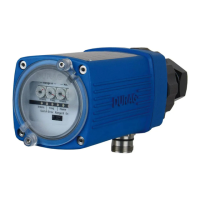2 Safety instructions
18 D−LX 200, D−LX 720
Suitable protective mechanisms and personal protective equipment must
be available in sufficient quantities and used by the personnel in
accordance with the relevant potential hazards.
The device may be used only when in faultless condition and in
compliance with the safety instructions!
The device as a whole and also its individual components may be used
only when in their original configuration.
Any interventions or modifications to the design of approved devices will
result in loss of the approval.
2.2 Hazards due to electrical equipment
This device is powered by electricity. Therefore only appropriately qualified
personnel may work on it. Such personnel must be thoroughly familiar with all
sources of hazards and repair measures described in these operating instructions.
High voltage. Danger of fatalities due to electrical current!
Coming into contact with live parts poses a direct risk of fatalities.
Damage to the insulation or to individual components can lead to fatal injury.
Before removing the casing or guard, check that the devices are deenergised.
The devices may only be connected to the supply voltage indicated on the
type label.
Cables must be routed so as to exclude the possibility of a risk of accident
by persons stumbling over them or hanging from them.
We recommend a power supply that guarantees reliable isolation between the
primary and secondary circuits (e.g. the DURAG D-NG 24/05).
Damage to electronic components due to electrostatic discharge (ESD)
Electronic components are becoming increasingly small and complex. Their
susceptibility to damage from electrostatic discharge is increased accordingly.
To protect these components, measures must be undertaken to prevent
electrostatic discharge for all work performed at the open device (ESD
protection).
To prevent static discharge from the human body, personnel may be equipped, for
instance, with a personal earthing system.
2.3 Hazard due to hot, aggressive or explosive gases
Danger of explosion in potentially explosive and hazardous areas!
Incorrect handling and operation can result in serious injury and material
damage.
The use of the Compact Flame Monitor D−LX 200, D−LX 720 in potentially
explosive and hazardous areas is only permitted with the correspondingly
marked device version intended for this environment!! Pay attention to the
instructions on explosion protection in Chapter 3. Pay attention to the
imprinted zone markings.

